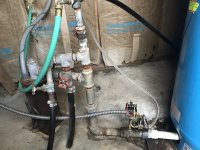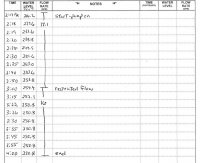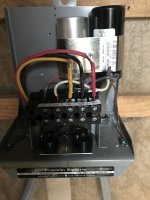freemarmoset
New Member
Upcoming plans to add a house filter and water softener to our current system along with a pressure switch that needs replacement due to age/failure, and discovery that there's currently no pressure relief valve, has led me to decide to replumb all the connections in our well house.
Picture is attached. It's currently mostly old galvanized (1 1/4") from the pump discharge to the pressure tank with a PVC T with a redundant pressure switch and no pressure relief valve. And then galvanized going down to 1" and then 3/4" feeding 3 PE supply lines leading out of the well house (1" supplies our home, 3/4" supplies barn 1, 3/4" supplies barn 2 and a couple of hydrants).
I want to add a proper brass T with a single pressure switch and relief valve and replace all the old galvanized. My first question is what material would you recommend? Copper, PVC? If I went with copper, would I need a dielectric at the pump discharge? I have a quote from a well contractor from about a year ago that specced out replacing the feed from the pump to the tank and the tank to the supply lines with 1" I.D stainless Flex pipe. That's certainly appealing to a DIYer in that it would save time cutting and gluing or soldering, and seems reasonable, but is that a terrible idea?
Second, would you keep the line between the pump and the tank 1 1/4" like it currently is, or just drop to 1" at the pump discharge. I've heard that's common and certainly what the old quote I have was suggesting, but would love to hear thoughts on that as well.
Thanks in advance!
Picture is attached. It's currently mostly old galvanized (1 1/4") from the pump discharge to the pressure tank with a PVC T with a redundant pressure switch and no pressure relief valve. And then galvanized going down to 1" and then 3/4" feeding 3 PE supply lines leading out of the well house (1" supplies our home, 3/4" supplies barn 1, 3/4" supplies barn 2 and a couple of hydrants).
I want to add a proper brass T with a single pressure switch and relief valve and replace all the old galvanized. My first question is what material would you recommend? Copper, PVC? If I went with copper, would I need a dielectric at the pump discharge? I have a quote from a well contractor from about a year ago that specced out replacing the feed from the pump to the tank and the tank to the supply lines with 1" I.D stainless Flex pipe. That's certainly appealing to a DIYer in that it would save time cutting and gluing or soldering, and seems reasonable, but is that a terrible idea?
Second, would you keep the line between the pump and the tank 1 1/4" like it currently is, or just drop to 1" at the pump discharge. I've heard that's common and certainly what the old quote I have was suggesting, but would love to hear thoughts on that as well.
Thanks in advance!



